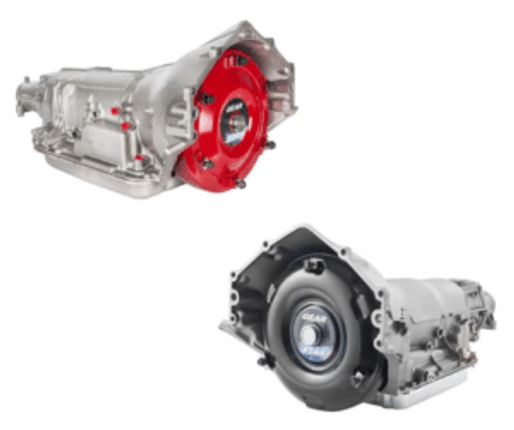Turbo 400 vs. 4L80E – Which Transmission Delivers More Power?
The Turbo 400 (TH400) and 4L80E are two powerhouse transmissions, but which one delivers more power? Let’s look at their differences, construction histories, common vehicle applications, and whether they can be swapped for each other. Understanding these factors will help you determine which transmission suits your needs best—whether you're seeking raw durability or modern features with more control.
Choosing between the Turbo 400 (TH400) and the 4L80E can be summed up as a question between horsepower and acceleration. Both transmissions have their merits, but picking the wrong one for your build can compromise performance or even result in compatibility issues, such as the fact that the 4L80E is a computer-controlled transmission, while the TH400 isn’t, and would require an additional transmission controller if mounted to an engine of a car originally rocking a 4L80E.
Without a clear understanding of their differences—power capacity, design, and compatibility—you could end up with a transmission that doesn’t meet your power needs or requires costly modifications. This article breaks down the key differences between the Turbo 400 and 4L80E, their histories, applications, and which one truly delivers more power.
Turbo 400 – Construction History and Overview
The Turbo 400, or TH400, was introduced by General Motors in 1964. Known for its durability and capacity to handle high torque, the TH400 quickly became a favorite for muscle cars, trucks, and drag racers. Built with three speeds and a simple hydraulic control system, this transmission was designed for heavy-duty use in performance vehicles, including muscle cars like the Chevy Chevelle SS and Pontiac GTO.
4L80E – Construction History and Overview
The 4L80E, introduced in 1991, was built by GM as the electronic successor to the TH400. Designed with overdrive, electronic controls, and more versatility for modern vehicles, it is essentially a stronger, electronically controlled version of the Turbo 400. The 4L80E was made for heavier trucks, SUVs, and commercial vehicles that needed a robust, efficient transmission with improved fuel economy for long hauls.
Differences in Power Delivery
When it comes to power delivery, both the TH400 and 4L80E are capable of handling high horsepower and torque. However, the way they deliver power differs. Both transmissions share the same gear ratios across the first three gears, but the 4L80E sports an overdrive gear (which the TH400 doesn’t), giving it higher efficiency and a greater peak at top speeds than its older counterpart.
While these transmissions are generally interchangeable for casual use, with the 4L80E coming out ahead in terms of overall fuel efficiency and compatibility as an electronically controlled transmission, it tends to be the better overall choice for most applications, whether high-performance or otherwise.
Vehicles the Turbo 400 and 4L80E Are Commonly Found In
The Turbo 400 was predominantly used in muscle cars and heavy-duty trucks from the 1960s to the early 1980s. Common vehicles include the Pontiac GTO, Chevrolet Chevelle SS, and various heavy-duty GM trucks. The 4L80E, however, is found in modern heavy-duty trucks and SUVs, such as the Chevrolet Suburban, Silverado, and Hummer H1. It is also widely used in commercial vehicles like buses.
Can the Turbo 400 and 4L80E Be Swapped for Each Other?
Swapping a TH400 for a 4L80E (or vice versa) is doable. Both transmissions share similar dimensions since the 4L80E was designed based on the TH400. Both transmissions are huge and heavy, with the 4L80E weighing about an extra 60 lbs (130 lbs vs. 187 lbs).
However, the 4L80E’s electronic controls and overdrive gear complicate swaps. Retrofitting a 4L80E into a car that originally came with a TH400 requires adding electronic control units (ECUs) and modifying driveshafts and crossmembers. The 4L80E being longer than the TH400 means a new driveshaft is necessary. As for the electronic control, there are a couple of different options. Chevrolet’s SuperMatic controller can be booted up and used to configure and finetune your transmission through a laptop or garage computer workstation.
In both cases, your next challenge will be the torque converter.
Most gearbox shops and auto shops wouldn’t recommend sticking to the respective stock torque converter when swapping between the two transmissions, despite the similarities in dimensions and gear ratios. Because of the difference in power and the added overdrive gear, swapping the larger stock converter on big block engines that the TH400 tends to be bolted to, to a smaller converter means saving weight, improving speed, and even getting a bit of fuel back on longer trips.
Which Transmission Delivers More Power?
While both transmissions can handle significant amounts of horsepower and torque, the 4L80E is better for long-distance and heavy-duty applications, offering more control, efficiency, and a more modern driving experience due to its overdrive and electronic controls.
With modern transmission tuning software, you can take an older transmission like the 4L80E and drag it into the 21st century, especially if you decide to opt for a professional rebuild over a stock model. With all its attached bells and whistles, the 4L80E becomes the heavy-duty transmission of choice when looking for a versatile transmission to attach to older big-block engines featuring a TH400, especially if you spring for the material benefits that come from a rebuild.
Conclusion
Both the Turbo 400 and the 4L80E have their respective strengths, and the choice between them largely depends on your specific needs. If you’re building an older high-horsepower drag racer, the TH400’s simplicity and power delivery make it a strong contender.
On the other hand, if you require modern efficiency, overdrive, smoother control for towing or daily driving, and longevity, the 4L80E might be the better choice. You’ll be hard-pressed to find stock TH400 transmissions in good condition as well and may need to opt for a rebuilt transmission one way or another. If you’re pulling both from older vehicles, then the 4L80Es tend to have more life left in them.
Ultimately, understanding these differences will help you make an informed decision for your vehicle’s performance needs.

